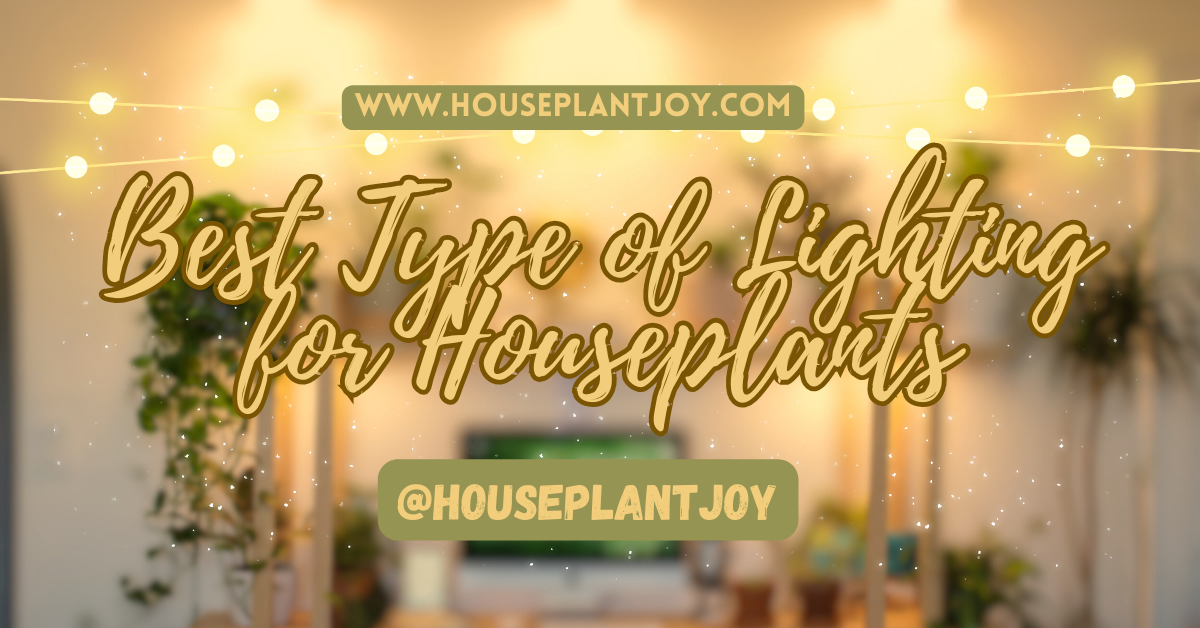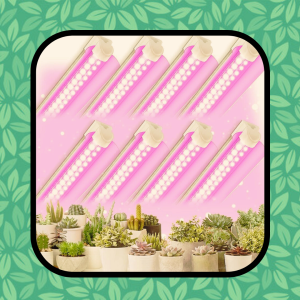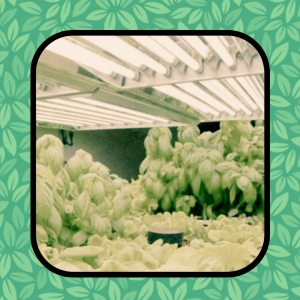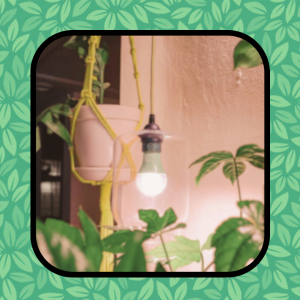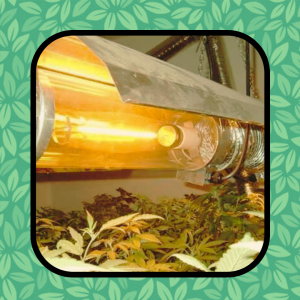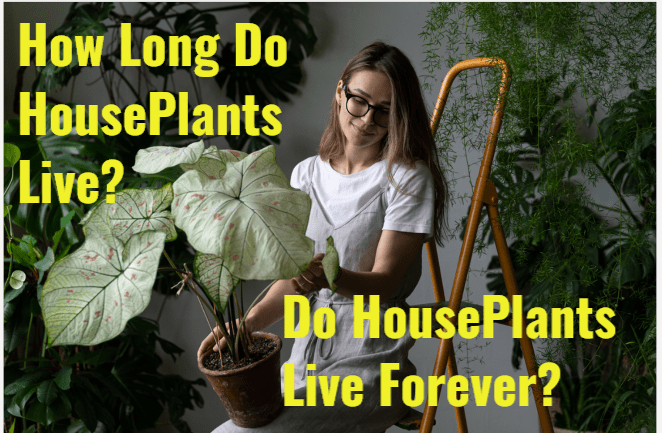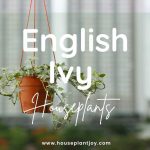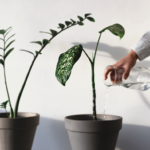HousePlantJoy is supported by our audience. When you purchase through one of our links, we may earn a small affiliate commission. As an Amazon Associate I earn from qualifying purchases. Your cost is not affected.
==================
Are you tired of your houseplants wilting and dying? The problem might be the lighting. Choosing the right type of lighting for your houseplants is crucial to their survival. Providing the best type of lighting for houseplants helps them thrive and grow. Whether you’re a seasoned plant parent or just starting out, this guide provides you with all the information you need to keep your houseplants healthy and happy.
Best Type of Lighting for Houseplants: Essential Guide to Optimal Growth
Houseplants require adequate lighting to ensure healthy growth and vitality. Different plants have varying light requirements, and it’s essential to match these needs to ensure your green companions thrive. While natural sunlight is often preferred, not every indoor space can provide the necessary exposure. Fortunately, artificial grow lights offer a practical solution, allowing plant enthusiasts to create optimal conditions for a wide array of houseplants, regardless of natural light availability.
Understanding the spectrum of light your plants need is a key part of choosing the right grow light. Plants typically require blue wavelengths for foliage growth and red wavelengths for flowering and fruiting, necessitating a full-spectrum lighting solution. LEDs and fluorescent bulbs are popular options, with LED technology being especially energy-efficient and long-lasting. Considering your particular plants’ needs and the various artificial lighting solutions available will guide you to the best choice for your indoor garden. Proper placement and installation can further enhance the effectiveness of grow lights, making light management a component of regular plant care.
Key Takeaways
- Matching plants with their specific light requirements ensures healthy growth.
- Full-spectrum LED and fluorescent lights are efficient choices for indoor gardening.
- Correct placement and ongoing management of artificial lighting are crucial for plant vitality.
Fundamentals of Plant Lighting
Understanding plant lighting is crucial for successful indoor gardening. Proper illumination ensures that your houseplants can photosynthesize effectively and flourish.
Photosynthesis and Light
Photosynthesis is the process by which your plants convert light into the energy they need for growth. The light required falls within a spectrum that is conducive to stimulating chlorophyll in the leaves, allowing plants to absorb light most efficiently primarily in the blue and red ranges.
Light Intensity and Quality
The intensity and quality of light can significantly affect your plant’s growth. Light intensity refers to the brightness of light that reaches the plant, usually measured in foot-candles or PAR (photosynthetic active radiation). High-intensity light can accelerate growth and is often required by flowering and fruiting plants. The quality of light pertains to the color spectrum and whether the light source provides a full-spectrum that plants need.
Light Intensity Levels for Houseplants:
- Low light: 50-250 foot-candles
- Medium light: 250-1,000 foot-candles
- High light: 1,000-2,000 foot-candles
Natural vs Artificial Lighting
Your houseplants can thrive under natural light, usually from sunlight that filters through windows. East-facing windows provide gentle morning sunlight, whereas south-facing windows offer more intense light. When natural light is insufficient, artificial sources such as LEDs or fluorescent bulbs can offer a consistent and controlled alternative. For various plants, artificial lighting can mimic natural light patterns and intensity levels, allowing for flexible placement and better growth control.
Choosing the Right Light for Your Houseplants
To ensure the health and growth of your houseplants, selecting appropriate lighting is vital. Different plants have varied light needs, and your home’s lighting conditions play a significant role in meeting those requirements.
Understanding Light Requirements
Each houseplant has specific light requirements, which can typically be categorized as low, medium, or high light. Low-light plants, such as the peace lily, require minimal light and can thrive in shadier spots. Conversely, high-light plants, like succulents, need abundant bright light.
Assessing Your Home’s Natural Light
Assess the natural light available in your home by noting the direction windows face. South-facing windows offer the most consistent light throughout the day, suitable for plants with high light needs. East or west-facing windows can support plants with medium light requirements, while north-facing windows provide the least light, matching well with low-light plants.
Types of Artificial Lights
If your home doesn’t receive enough natural sunlight, consider artificial lights. Options include:
- Fluorescent lights: Great for starting seedlings or growing low to medium-light plants.
- LED lights: Energy-efficient and long-lasting, these lights are suitable for a variety of plants and can mimic natural light.
- Incandescent lights: Better for plants that require warmer conditions, as they emit more heat.
Color Spectrum Considerations
Plants need light in the blue and red spectrums for photosynthesis. Blue light promotes vegetative leaf growth, while red light aids in flowering and fruit production. Full-spectrum bulbs provide a balanced light that simulates natural sunlight, benefiting most houseplants.
Artificial Lighting Solutions
When selecting artificial lighting for your houseplants, it’s important to consider the type of light that best suits your plant’s needs. Here’s a breakdown of various lighting solutions tailored to support plant growth and health.
LED Grow Lights
LED grow lights are highly energy-efficient and provide a full spectrum of light, mimicking natural sunlight. These lights can be customized for your plants, giving you control over the blue and red wavelengths that influence plant processes.
Fluorescent Tube Lights
Fluorescent tube lights are a common choice for gardeners due to their even light distribution and cooler operating temperatures. Their broad spectrum is suitable for growing a variety of houseplants, especially greens and seedlings.
Compact Fluorescent Lamps
Compact fluorescent lamps (CFLs) are a more space-saving option than tube lights and work well for smaller plants or areas with limited space. These bulbs fit into standard lamp sockets and provide a spectrum conducive to plant growth.
Incandescent Bulbs
While incandescent bulbs are less energy-efficient and offer a narrower spectrum, they can be used for specific purposes. They’re best for providing warmth to plants that require higher temperatures, but may not be the most cost-effective option for full-time lighting.
HID Lights
High-intensity discharge (HID) lights, such as metal halide (MH) and high-pressure sodium (HPS) lamps, are powerful and can cover a greater area. These are often used in commercial settings and can be great for larger indoor gardens in need of intense lighting.
Video Credit: @TheJungleHaven
Placement and Installation Tips
The right positioning can maximize the growth and health of your houseplants. Adhering to installation best practices ensures long-lasting, effective lighting.
Proper Light Positioning
To optimize plant health, it’s imperative to place your plants in locations where they will receive the appropriate amount of light. High-light plants typically thrive up to 10 feet away from west-facing windows, bathing in the afternoon sun. Conversely, medium-light plants fare well about five feet from a south- or west-facing window, ensuring they receive a more moderate light.
- East-facing windows: Ideal for plants that need bright, indirect light
- North-facing windows: Suitable for plants preferring low light conditions
Installation Best Practices
When installing lighting for plants—like grow lights—ensure they’re secure and provide even coverage. Adhere to the distance guidelines specified by the manufacturer to prevent leaf burn or suboptimal growth. Use reflective surfaces to maximize light intensity and distribution, which can be especially helpful as you move plants away from natural light sources.
- Install lights overhead or with adjustable arms to cater to plant height.
- Use timers to maintain a consistent light cycle, simulating natural daylight hours.
Light Management and Care
Managing light for your houseplants involves careful consideration of various factors to ensure they receive the optimal amount and type of light throughout their different growth stages. The right light management can significantly impact your plant’s health and growth rate.
Adjusting Light for Growth Stages
Seedling Stage: At this stage, your plants require 14-16 hours of bright, indirect light each day. You can achieve this with a grow light, especially if natural light is insufficient.
Vegetative Stage: As plants mature, they need around 12-14 hours of light. Transition gradually to a mixture of direct and indirect sunlight, if your plant species prefers it.
Flowering Stage: Depending on the plant, some might require up to 16 hours of light. If natural sunlight is not available for this duration, complement it with artificial lighting.
Monitoring Light Exposure
Shadow Test:
- Full Sunlight: A sharp, clearly defined shadow indicates high light intensity.
- Partial Shade: A shadow that’s visible but fuzzy around edges suggests medium light.
- Full Shade: A very faint shadow or none at all points to low light situations.
Use a light meter for a more accurate measurement, aiming for a lux level that matches your plant’s needs. For houseplants, the desired range often falls between 5,000-10,000 lux.
Daily Light Integral
Understand and use the concept of Daily Light Integral (DLI), which measures the total amount of light delivered to a plant each day:
- Low-light plants: Typically require a DLI of 3-6 moles per day.
- Medium-light plants: Aim for 6-12 moles per day.
- High-light plants: They need a DLI of 12-20 moles per day.
To calculate DLI yourself, use the equation: DLI = (PAR × 0.0036 × photoperiod), where PAR is photosynthetically active radiation, and the photoperiod is the number of light hours in a day.
Troubleshooting Common Issues
When taking care of houseplants, understanding how to manage lighting conditions is crucial for ensuring plant health. Here’s how to identify and fix common lighting issues.
Dealing with Too Much Light
If your plants are showing signs of excessive light exposure, such as brown, burnt, or crispy leaves, immediate action is necessary. Firstly, relocate your plant to an area with more suitable lighting. A quick guide to recognizing light issues can help identify the right spot. Adding a sheer curtain to filter the sunlight can protect your plants while still providing them with essential light. Regularly rotate your plants to ensure even light distribution, preventing certain areas from getting overexposed.
Solving Insufficient Lighting Problems
Plants that lack enough light tend to become leggy, with weak, elongated stems, as they reach for a light source. To correct this, move your plant closer to a natural light source or consider using supplemental lighting. Artificial grow lights can effectively replace or enhance natural light, especially during winter months. Choose a light with the correct spectrum and intensity for your plant’s specific needs, and monitor for improvements in foliage and growth structure.
Choosing the Optimal Type of Lighting for Houseplants
In the journey to nurture thriving houseplants, the significance of selecting the right type of lighting cannot be overstated. As we explored the nuances of plant lighting, from understanding the fundamentals of photosynthesis to delving into the diverse spectrum of artificial grow lights, one key takeaway stands out—matching your houseplants with their specific light requirements is essential for their health and vitality. Whether you opt for energy-efficient LEDs, versatile fluorescent bulbs, or other lighting solutions, the proper placement and ongoing management of light play a crucial role in ensuring your green companions not only survive but truly flourish. By embracing the insights shared in this comprehensive guide, you empower yourself to create an optimal environment for your houseplants, fostering a space where they can thrive and bring natural beauty into your home.
Frequently Asked Questions
In this section, you’ll find focused answers on how different lighting options and practices can optimize plant growth indoors, helping to ensure your houseplants get the light they need to thrive.
What are the benefits of using LED lights for indoor plant growth?
LED lights are energy-efficient and produce less heat compared to traditional grow lights, which makes them ideal for long-term use without the risk of overheating your plants. Additionally, they often have adjustable spectrums to cater to different plant growth stages.
How do different colors of light affect plant growth?
Blue light generally encourages vegetative leaf growth, while red light helps promote flowering and fruiting. Plants exposed to a balanced spectrum that includes both red and blue light tend to grow more efficiently than those receiving light from a single-color spectrum.
What should I look for when choosing a grow light for my indoor plants?
When selecting a grow light, consider the light intensity, spectrum, and the area you need to cover. Ensure the light you choose is suitable for the type of plants you are growing and their specific light requirements, which can range from low to high intensity.
How can I determine the best placement for grow lights in my home?
The best placement for grow lights is generally above the plant to mimic natural sunlight. The distance between the light and the plant can vary, but keeping lights close enough to illuminate the plants without causing heat damage is crucial. Perform regular checks to monitor growth and adjust as necessary.
What distinguishes full-spectrum grow lights from other types?
Full-spectrum grow lights provide a balanced light similar to that of natural sunlight, containing all the colors of the spectrum. This type of light is beneficial for supporting a plant’s complete growth cycle from seedling to flowering.
How does light intensity impact the photosynthesis process in houseplants?
Light intensity influences the rate of photosynthesis, with insufficient light leading to reduced growth and vitality. Conversely, too much light can damage plant tissues. Finding the appropriate light intensity is key to supporting strong photosynthesis and overall plant health.
Unlock the World of Houseplants with Houseplant Joy! ?
Elevate your houseplant journey by connecting with us on social media! Join a passionate community that dives deep into the art of lighting for houseplants, sharing expert tips and genuine product reviews.
Explore Our Platforms:
- ? Facebook: Dive into engaging articles and discussions.
- ? Instagram: Discover visually stunning plant setups and inspiration.
- ? Pinterest: Pin your favorite plant care guides and aesthetic ideas.
- ? Twitter: Stay updated on the latest trends and join real-time conversations.
Connect, learn, and grow with Houseplant Joy! ? #HouseplantJoy

